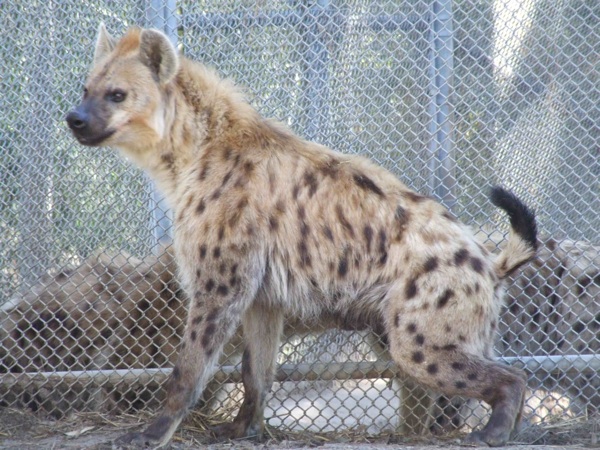Just Giggling? Information Content of the Hyena’s Laugh
Nicolas Mathevon – mathevon@univ-st-etienne.fr
Université de Saint-Etienne, France (Currently Visiting Miller Professor at the University of California, Berkeley)
Aaron Koralek Steve Glickman – glickman@calmail.berkeley.edu
Frédéric Theunissen – theunissen@berkeley.edu University of California, Berkeley
Popular version of paper 4pAB3 presented at the 2009 157th ASA Meeting in Portland, Oregon.
Hyenas are well known for their vocalizations, which eerily dominate the soundscape at night in the African savannah. The vocal repertoire of the spotted hyena is large, with more than ten different vocalizations. Since hyenas are predominantly nocturnal, vocal signalling is a privileged channel, used for both long- and short-range communications. For instance, the loud “whoop” is primarily used as a signal toward remote individuals, permitting acoustic interactions between spatially dispersed members of a clan, or between members of different clans. Alternatively, the “grunt” or “soft growl” is uttered during close meeting of clan mates and remains barely audible after a few meters of propagation.

Among the vocalizations used during interactions between adult clan-mates, we now focus on the “giggle call,” often referred as the “laugh” of the “laughing hyena.” Giggles are high-frequency sounds, commonly emitted in bouts, and often emitted when hyenas are engaged in competitive feeding on a common prey. Although whoops have been the subject of some excellent field reports, acoustic features of the giggle call have not been analyzed, presumably because of difficulties in isolating giggles from individual animals in the natural habitat. The captive colony of spotted hyenas, maintained at the Field Station for the Study of Behavior, Ecology, and Reproduction (University of California, Berkeley), displays the primary behavioral attributes of spotted hyenas in nature, including formation of a matrilineal social system and adult female dominance over adult males, although the hyenas are maintained in small groups. The existence of this captive colony permitted the recording of giggles from individual hyenas.
The captive colony of spotted hyenas, maintained at the Field Station for the Study of Behavior, Ecology, and Reproduction (University of California, Berkeley), displays the primary behavioral attributes of spotted hyenas in nature, including formation of a matrilineal social system and adult female dominance over adult males, although the hyenas are maintained in small groups. The existence of this captive colony permitted the recording of giggles from individual hyenas.
As the result of transmitting a broad range of messages related to the emitter, the hyena’s giggle / laugh may play an important role during social interactions. Together with other vocalizations, and chemical, tactile and visual channels, giggles contribute to an array of communicative signals that that are appropriate to the complex social system of the spotted hyena.
Listen to the hyena laughing.

